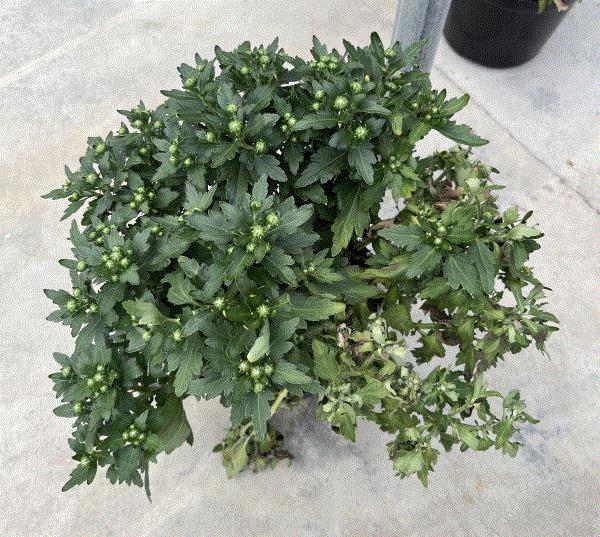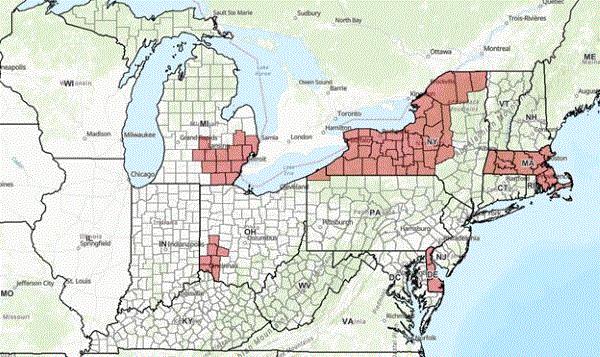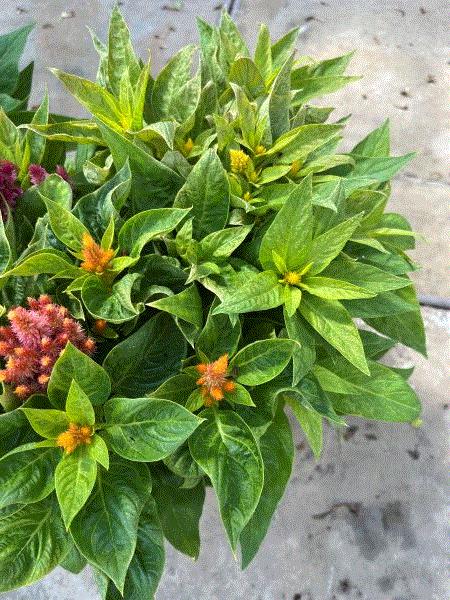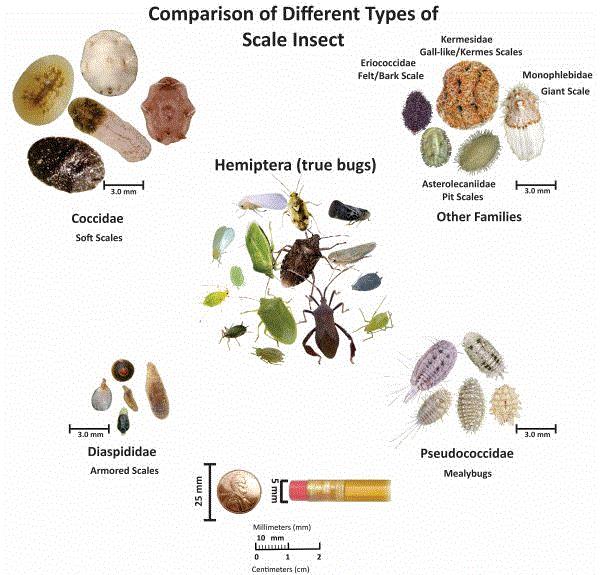What Heat Can Do to Mums
Summer in the south is synonymous with being hot. I thought I’d have some cooler weather when I drove around the Midwest visiting growers last week. I had to perform a hard mental adjustment when I landed in St. Louis and felt the oppressing heat and humidity as soon as I stepped out of the airport. I thought, “Gosh! That’s no good for growing plants.”
I talked about what heat can do to mums in this newsletter about a month ago. At that time, I was thinking more about production in the southern fields. But the same applies to growers in part of the Midwest. (The other parts, such as Minneapolis, are a bit cooler, from what I've heard.) Roots in black pots are stressed by direct sun exposure and high temperatures, as well as saturated root zones or repeated dry/wet cycles. Plants under these conditions are more susceptible to root rot diseases, such as Fusarium and Pythium.

One-sided wilt is a common symptom of Fusarium infection.
So, as a friendly reminder, watch out for root diseases when mum roots are experiencing heat stress. I think a good management approach is to combine cultural practices that can alleviate heat stress—such as maintaining consistent, but not excessive, moisture in the root zones, increasing cooling capacity or air movement, and maintaining the most appropriate pH and EC levels—along with preventive fungicide treatments.

BTM Found in Maryland
The Maryland Department of Agriculture announced that a box tree moth (BTM) infestation has been found at Fort Frederick State Park near Big Pool (Washington County), Maryland. This detection adds to those in Delaware (2024), Massachusetts (2023), Michigan (2021), New York (2021), Ohio (2023), Pennsylvania (2024) and West Virginia (June 2025).
It isn’t clear how BTM was introduced to Washington County, Maryland. The proximity of this location to the recent detection across the Potomac River in Berkeley County, West Virginia, makes me wonder if the two infestations are somehow connected. State park staff are working to remove the infested boxwood.

Counties with active quarantine against box tree moth are colored. (Source: USDA-APHIS-PPQ.)
Quarantine hasn’t been declared for counties in Maryland and West Virginia. Seeing how quickly quarantine was established for counties in other states (see the map above), I think some regulatory actions will be announced in the coming months. Quarantine is certainly a hassle, but workable for nurseries that enter compliance agreements with USDA state departments of agriculture.
Go HERE for an example of the compliance agreement for regulated nurseries. Specific details of the compliance agreement may differ among states, but you can see examples of regulated articles and specific treatment options in the linked compliance agreement.
In the meantime, folks interested in BTM and its management should go to this technical bulletin from Virginia Tech. The document contains information on monitoring based on growing degree days and management using mass trapping, biological control and insecticide treatments based on research done by scientists at USDA-APHIS and Virginia Tech. Go HERE for a webinar from the Horticultural Research Institute about BTM.

Summer Pest Management Tips From Paul Pilon
The August issue of GrowerTalks is all about perennials. Several pest management-related articles piqued my interest, so I’ll summarize three of them today. But there's so much useful informationin this issue for perennial growers, such as new varieties and irrigation. Go check out the full articles if you haven’t already.
In his article, “Summertime: It’s exponential,” our own Paul Pilon explains how heat and the need for increased irrigation can be problematic to your pest management program. (Echoing my first item in this issue.)
For example, irrigating at the wrong time or at the wrong frequency can cause more foliar diseases than y’all can manage, so don’t just go on autopilot. Instead, think carefully about how to manage irrigation.
Paul provided several tips on summer irrigation: apply enough water to bring the root zone up to container capacity, use a low rate of wetting agent, grow plants under shade and water when leaves can dry quickly.

High temperatures and low humidity makes spider mites very happy.
Using western flower thrips and spider mites as examples, Paul explains how heat can make bothersome pests even more challenging. Paul also provided several tips on summer pest management: begin a program early, use proper insecticides or miticides, achieve good spray coverage, and repeat applications.
Go HERE to read Paul’s article for more tips on how to irrigate and manage pests properly in the summer.

Getting Sticky With Scale Insects
Zee Ahmed, the turf and ornamental entomologist at Clemson University, and I contributed an article on scale insect management to the August issue of GrowerTalks. This article had its start in the May issue of this newsletter. Zee and I expanded on some points I made in the newsletter, and Zee went all out on the graphics. (Zee’s so much better at creating attractive graphics than me. My graphics look exactly as they’re taken with my cell phone and have never gone through Photoshop.)
There's a very important message we want to get across: you should know what kind of scale insects you're dealing with before you can figure out which insecticides to use. Why? Each of the major scale insect families or groups—be it armored scales, soft scales, felt scales, kermes scales or mealybugs (yes, mealybugs are scale insects)—have a different biology. In fact, different scale insect species have different crawler or hatchling emergence times.
At the very least, you need to know your scale insect group. Because crawlers are the targets of treatment, your application time is going to be different when dealing with different species. And because each scale insect group has different susceptibility to insecticides, you need to know which species you're dealing with to select the most effective insecticides.

Scale insects look completely different from their counsins, the true bugs. (Figure credit: Zee Ahmed, Clemson University.)
But there are more than 1,100 scale insect species in North America, how do you know which species to focus on? In the article, Zee and I provided a list of 35 common scale insect species or genera, along with their crawler emergence times of each generation. That should help y’all decide which species to learn to identify and when to expect crawler emergence.
Zee and I closed the article by talking about how to select insecticides. One important lesson we’ve learned over the years is that adult scales are hard to kill, so focus on targeting crawlers or hatchlings.

Managing Weeds in Perennials
The last article from the August issue of GrowerTalks that I want to talk about is an article by Corteva. Now, some of y’all may think that sponsored articles are nothing but a sale pitch in disguise. Yes, certainly some of that. But I’ve written so many of them since I joined the private industry that I can say many of these articles do have very good information. I, for one, put in my best effort to write sponsored articles that are informative to all while highlighting what my company’s products can do.
Similarly, Broch Martindale of Corteva also provides us with useful information on weed management in perennial production. In addition to introducing readers to Corteva’s preemergence and postemergence herbicides, Broch also commented on how important late-season (late summer or early fall) preemergence applications can be in the overall success of a weed management program. Broch mentioned four best practices for preemergence herbicide use: apply to weed-free soil, water in, reapply as needed and know your crop tolerance.
Read more about these best practices by going HERE.

GrowerTalks Livestream on Preemergence Herbicides

Speaking of weed management, I want to direct y’alls attention to an upcoming GrowerTalks Livestream event a few days from now. On August 27 at 1:00 p.m. Eastern/Noon Central, Janna Beckerman and Steve Larson of Envu will talk about how to save time, labor and money by using preemergence herbicides. Janna and Steve will discuss a recent study on weed management products and practices that will offer savings in costs while achieving successful weed management.
Go HERE to register for this livestream event.
See y'all later!

JC Chong
Technical Development Manager at SePRO
Adjunct Professor at Clemson University
This e-mail received by 27,847 subscribers like you!
If you're interested in advertising on PestTalks contact Kim Brown ASAP!